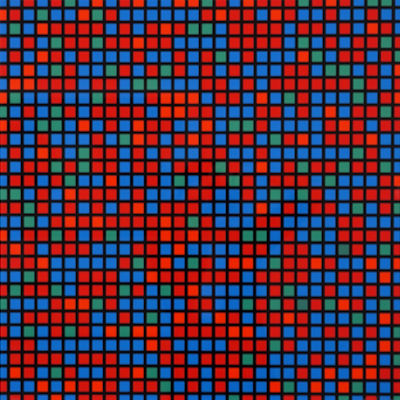
Details
Artist
Styles
// Tewek by Victor Vasarely, created in 1978, is a silkscreen print that epitomizes the artist’s pioneering work in Op Art. This limited edition print uses a grid of circular shapes in varying sizes and shades of brown, orange, and yellow, arranged in a way that creates a pulsating, three-dimensional effect. The optical illusion makes the shapes appear as though they are expanding from the center, creating a sense of depth and movement on a flat surface. Vasarely’s mastery of geometric abstraction and color manipulation draws the viewer into an immersive visual experience, as the composition seemingly vibrates with energy. This piece, with an edition of 250, showcases Vasarely's ability to transform simple shapes into dynamic visual phenomena, exemplifying his exploration of perception and dimensionality.
Tewek, 1978
form
Medium
Size
81 x 72.4 cm
- Inches
- Centimeters
Edition
Price
- USD
- EUR
- GBP
Details
Artist
Styles
// Tewek by Victor Vasarely, created in 1978, is a silkscreen print that epitomizes the artist’s pioneering work in Op Art. This limited edition print uses a grid of circular shapes in varying sizes and shades of brown, orange, and yellow, arranged in a way that creates a pulsating, three-dimensional effect. The optical illusion makes the shapes appear as though they are expanding from the center, creating a sense of depth and movement on a flat surface. Vasarely’s mastery of geometric abstraction and color manipulation draws the viewer into an immersive visual experience, as the composition seemingly vibrates with energy. This piece, with an edition of 250, showcases Vasarely's ability to transform simple shapes into dynamic visual phenomena, exemplifying his exploration of perception and dimensionality.
- Recently Added
- Price (low-high )
- Price (high-low )
- Year (low-high )
- Year (high-low )
What is geometric abstract art?
Geometric abstraction is a form of abstract art that uses geometric shapes arranged in a non-illusionistic space (though not always) and combined into non-representational (non-objective) compositions. Based on years of artistic research, some artists have proposed that geometric abstraction offers a solution to modern challenges by rejecting traditional illusionistic practices in favor of clarity and simplicity.





































































